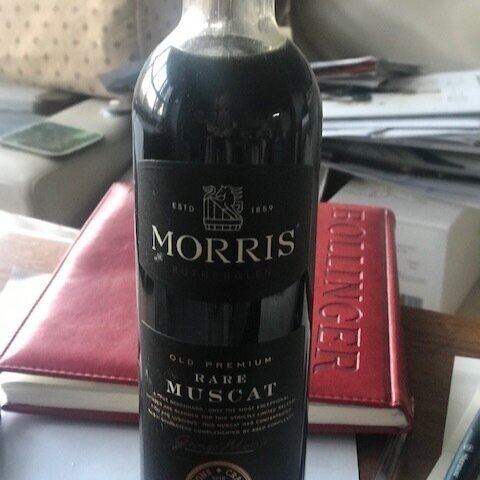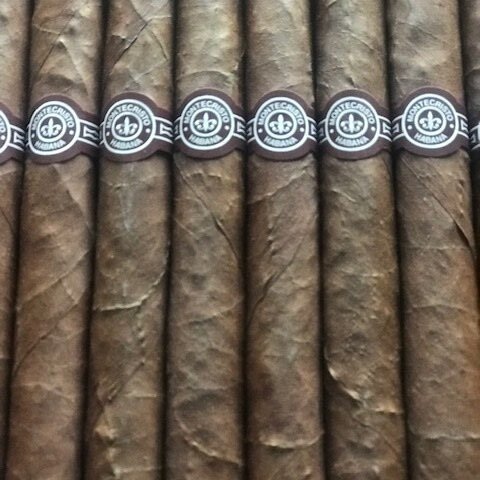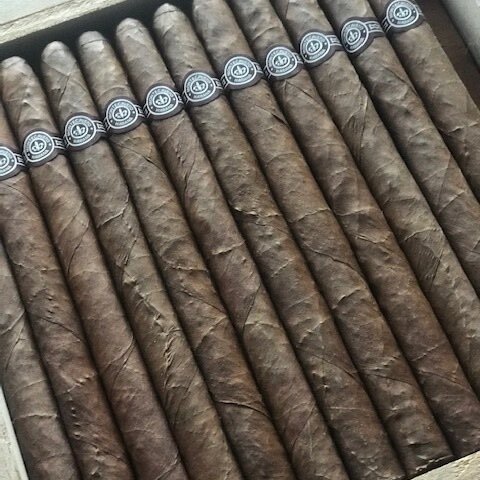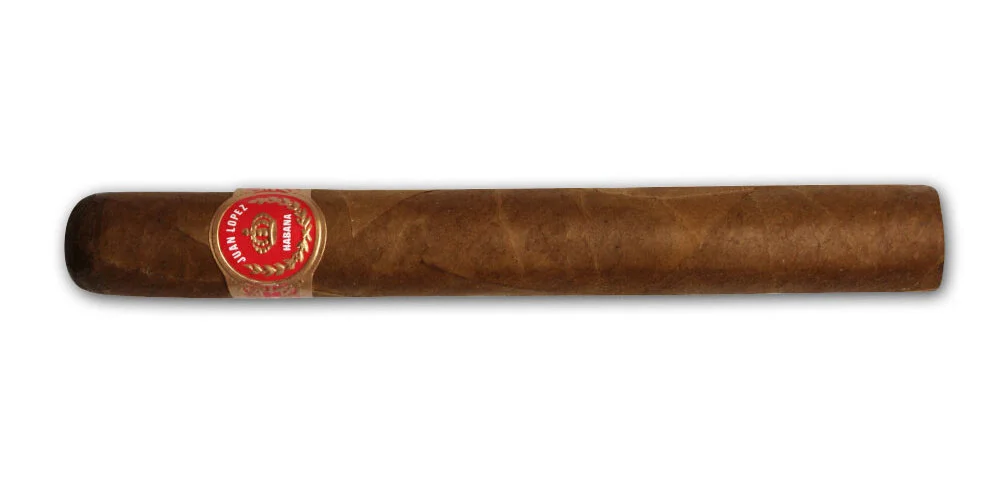Montecristo Especiale No 1 – Rutherglen Muscats
Our dear friend Fuzz recently chastised me for not having a better filing system in my life. I figure I have many filing systems so that has to be a better way to do things than just one. However, it does mean that ever so occasionally, things slip through.
As I am certain that anyone who has gotten close enough to me to hear me whinge of late, you’ll be aware that I am stuck south of the Queensland border unable to get home and having contracted an unbelievably painful case of shingles followed by what is known as postherpetic neuralgia, which one gets if one does not diagnose the shingles soon enough. Although I am sure some doctors on the site could provide more, and more accurate details. Anyway, as I have probably bored half the world with, as my rash did not appear until later in the proceedings, shingles was not considered. We went from possible blood clots (I have form with this, though not for fifteen years) to some form of bursitis to a prolapsed disc to an arthritic hip to, when finally the rash deemed to show itself, shingles. I'd had all sorts of orthopods and specialists slinging advice so when the local GP saw the rash and could identify what it was, he was as happy as a kid at Christmas. I was not.
But all that meant this postherpetic crap was to follow. That is shingles-lite. No rash and the pain is not as bad (not sure anything could be – a friend told me that when she had shingles, the pain was ten times that of childbirth. I could not comment on that but I can believe it). But it puts you off so much and as it can last a year or longer, it is a thoroughly depressing illness. I can manage about a third of a usual day’s work (better than shingles when I could manage zero), can’t go for the beach walks, hardly feel like a drink and don’t feel much like a cigar, although when I have one, it does make me feel much better. So I have got behind in my Kenfessions.
So looking through the old notes to see what I had (have dozens I have not written up) but sadly my many filing systems have confused things. I have touched on the amazing Rutherglen muscats before and I promised to return – I never did. So here we go.
But first, I needed a cigar and the records (Fuzz, occasionally the system works) I had a Montecristo Especiale No 1 with one of the ‘Rare’ category. This intrigued me as I thought I only had a single box of Monte Especiales No 1 and that I happened to have it with me down here in exile and had opened it and smoked the first one during that fascinating Hamlet zoom. This cigar preceded that.
Unfortunately, my extensive filing system falls down on just where on earth this other one came from, but I am intrigued as the one I had the other day, from a 2009 box, was so brilliant that I had planned to do it for Kenfessions. Never fear, I’ll try another.
I noted I smoked it with a great Muscat and they matched brilliantly. You would expect this, given that the rich, intense lusciousness of the Muscat should work well with the chocolatey notes for which this cigar is famous. The notes revealed toast, nuts and dark chocolate on the opening. A reasonably tight draw and some more dark chocolate as we got to through the first third. Very well constructed. A little hot at the finish, but overall, while it was a decent cigar, it was ultimately a little unsatisfying as there was nothing to rave about. No ‘wow’ factor. I gave it 90.
The one I had recently during Hamlet’s video, 97 or 98 standing on its head. It was that good. I have no idea of the age of the previous one and obviously a different box. Very much looking forward to pulling out another from this latest box. We all know about the lack of consistency in Cubans so this will be an interesting exercise.
Muscat. From Rutherglen. Continuing the story from way back when. Not sure how many tourists were heading to northern Victoria back in the 60s, but in an effort to promote their region, the locals hosted a festival in 1967, the first such event held in this country. It was financed by a $50 loan from a supportive local, but the results astounded even the most optimistic among them. Some 5,000 people arrived to enjoy the first Rutherglen Wine Festival. The following year, more than 12,000 turned up. It morphed into the Winery Walkabout and is still wonderfully successful in attracting consumers and visitors to the region, at least in non-COVID years.
It is a terrific region to visit for winelovers, though don’t look for delicate whites or elegant Pinot Noir styles. This is fortified country, one of the finest in the world. The table wines tend to the white Rhone varieties and big, full reds. But mostly, this is home to some of the world’s greatest fortifieds, the muscats, tokays, tawny ports and sherries as we used to call them. Now muscats, topaques, tawnies and apera. Spare me.
Winemaking will take any advantage new technology offers but it certainly does not forget its roots. Foot stomping and hand plunging are widely used. The region offers experienced winemakers with skills in blending old fortifieds and young, emerging winemakers bringing innovation. Fortifieds might seem a tad old-fashioned, but this region is working hard to ensure we’ll be enjoying them for decades to come. This is a skill that must not be allowed to die.
The changing of the guard, or at least the renaming of these Aussie classics, followed the usual reasons pertaining to clashes with European names, sometimes more valid than at other times (Prosecco, I'm looking at you – at the obviously insincere attempts by Italian authorities to rewrite history, but that is for another time).
Tokay was seen as likely to cause offence to Hungary’s national treasure Tokay. Indeed, that was how Aussie Tokay originally got its name. Back when labelling was somewhat laxer than in recent years, this fortified was dubbed “Tokay” as locals thought, for reasons somewhat unclear, that the grape might be Hungary’s famous Hárslevelű. In 1976, a French ampelographist identified it as Muscadelle, the third grape of Sauternes.
Hence, a new name was needed: Topaque was the result. There are those who like the name more than I do but no matter. Muscat, made with what is otherwise a fairly minor variety, Muscat à Petits Grains Rouge (which means “muscat with little red berries”), remains Muscat, as it is named after the variety. It is one of some 200 different varieties of Muscat worldwide, but it is the only one used in Rutherglen.
Good Topaque offers a slightly more elegant style of fortified with more citrus and cold tea notes. They are perhaps more honey than molasses, though in truth there are times when Muscat and Topaque are a little difficult to tell apart. A great Topaque can be just as thrilling as the best Muscat.
Australian sherry became Apera. “Tawny Port” is now simply Tawny, while what was “Vintage Port” is now called Vintage Fortified. The changes applied as of June 2012.
In days gone by, the range of fortifieds from Rutherglen was a bit of a mishmash and a lucky dip. The knowledgeable plundered the wines, cherry-picking the very best. One had to know one’s producers and where the wines sat in that producer’s hierarchy. Those who did, picked up some extraordinary bargains. Even today, and even though prices have risen considerably, this is still a category of the market offering amazing value.
The confusion that existed, and lack of consistency across the region, led to the eminently sensible decision to bring in a classification system in 1995. Prior to its introduction, a buyer rarely had any idea if the Muscat they were buying was a few years old or a few decades. The producers of both could name their wines a “classic,” for example.
The system was not purely an age statement, though that was part of it. “Richness, complexity and intensity of flavor” are also important. The makers recognised that merely because a wine has spent a long time in a barrel doesn’t mean it will be good. Locals judge which wines fit in which category.
On one hand, that is a bit like politicians judging other politicians, but the makers here are very keen to ensure that the reputation of Rutherglen is untainted. That can’t happen if they do not keep a rigid control on which wines qualify for the best classifications.
In ascending quality, the four levels are as follows.
Rutherglen Muscat
This is the base of the pyramid. The wines are usually around three to five years in age and with residual sweetness of 180–240 grams/liter. They should offer “fresh raisin aromas, rich fruit, clean spirit, and great length of flavor on the palate.”
Classic Rutherglen Muscat
Look for a “greater level of richness and complexity.” These wines should have an average age of six to ten years with a level of residual sweetness sitting at 200–280 grams/liter. These should “impart the distinctive dry ‘rancio’ characters produced from maturation in seasoned wood.”
Grand Rutherglen Muscat
An average age of 11 to 19 years (oddly specific) with residual sweetness sitting between 270–400 grams/liter. These wines offer a higher level of “intensity, depth, and concentration of flavor, mature ‘rancio’ characters, and a complexity that imparts layers of texture and flavor.”
Rare Rutherglen Muscat
These are the gold standard, rare indeed, and often very expensive (which does not mean that they are not amazing value). These wines will have a minimum age of at least 20 years, often decades more, and a level of residual sweetness between 270–400 grams/liter. They will be blended from the richest and best wines in a producer’s cellar and offered in tiny quantities. They should be “wines of breathtaking complexity, texture and depth of flavor.”
Of course, as well as the different categories, each producer has its house style.
As for identifying the top producers of Muscat, there is a “Muscat of Rutherglen Network,” which includes All Saints, Buller, Campbells, Chambers, Morris, Pfeiffer, Seppelt, and Stanton & Killeen.
Rutherglen Muscat is unique. The closest thing is perhaps a top-notch Pedro Ximenez sherry, though the Muscat is likely to be more ethereal and elegant (if one can attribute elegance to something so incredibly concentrated and powerful). Some wines are uniquely Aussie – Hunter Semillon, Clare Riesling, sparkling Shiraz – and this is one of them.
As mentioned, Muscat is made with Muscat à Petits Grains Rouge, also known as Rutherglen Brown Muscat. The best are a blend of a number of years, aged for different periods – not just old material, as often quality young components will add freshness to a blend.
As in every region, methods vary. Some use old oak only (Morris is an example), while others may include material aged in newer oak (although not many admit to it); some add acidity, while others refrain; some macerate the skins for extra flavor; size of oak can vary between 60 litres up to 50,000 litres.
Time of picking the grapes influences the final wine and may result in a sweeter or drier style – late harvesting is crucial to the style, providing grapes in a partially raisined state. Usually, the longer the better and the grapes can sometimes reach 20° baume.
As Mick Morris, David’s father, once said, they try and “get the maximum fruit and flavor and also look for complexity and balance.” Crucial to great Muscat is a winemaker’s ability to blend the different components, very similar to what a chef de cave does in champagne, making those blends.
After pressing, the grapes go through partial fermentation before the addition of grape spirit puts a halt to that, which of course retains sweetness in the final wine. They are then aged in what often becomes a form of a solera. As a generalisation, the flavours one finds in top Muscats include raisins, chocolate, Turkish Delight, nuts, plum pudding, coffee beans, fudge, toffee, florals, butterscotch, figs, caramel and much more.
These wines are a wonderful match with a number of different foods: dark chocolate, nuts, glacé fruits, are all popular. I’ll confess that as soon as I finished my “formal” tasting, out came the Parmesan to enjoy with leftovers. And they are brilliant with a cigar. That said, it is clearly something I need to revisit to confirm in the very near future.
KBG









